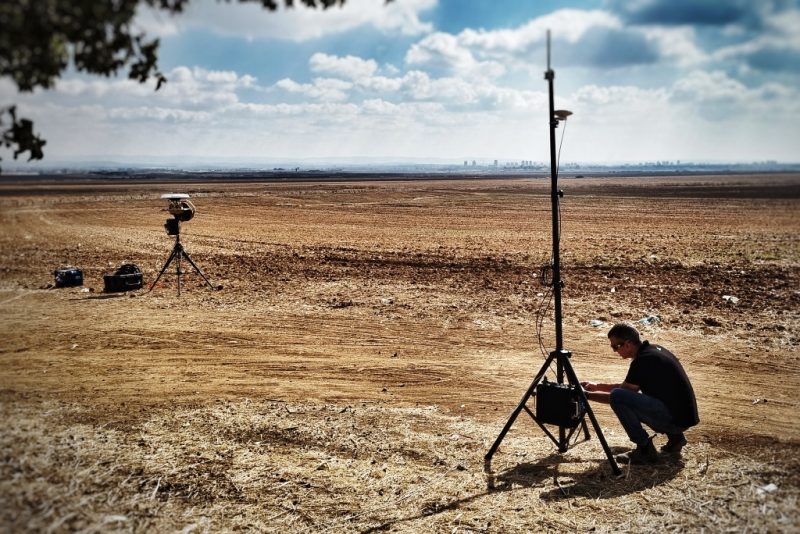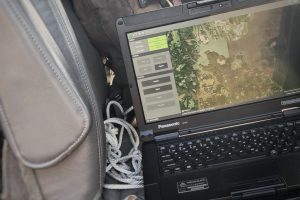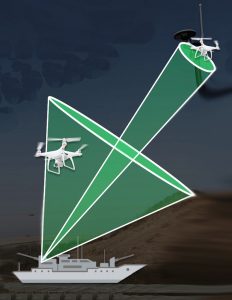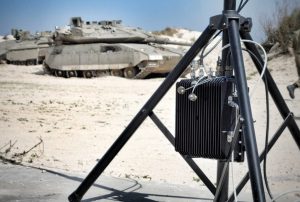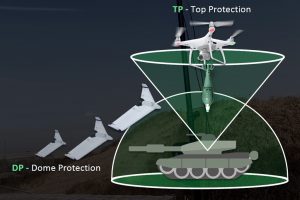Regulus Cyber of Israel unveils its Ring R1 C-UAS system
While many new defence products are unveiled when they are still at an early development stage, prototype or even technology demonstrator, a minority reaches the public domain only after being deployed. Regulus Cyber of Israel, a six-year old company, is expert in software-based GPS/GNSS security. Beside the Pyramid, a solution aimed at protecting GNSS receivers from spoofing and jamming attacks, it recently publicly unveiled the Ring, a Counter-UAS (C-UAS) system that presents a series of innovative capabilities, and is based on spoofing techniques, as usually who does the shield also knows how to do the sword. Not only, the most recent version, the Ring R1, is also fitted with a software-based RF detection solution which makes the system fully autonomous.
The Ring is aimed at countering Class 1 and Class 2 commercial or commercial derivatives UAS, operating alone or in swarms, as the majority of those drones, which constitute the higher percent of the threat, are fitted with GNSS-based positioning systems. “Our Ring is fully operational, deployed on sea and land and protecting borders, and we can define it combat proven,” Yonatan Zur, CEO and co-founder of Regulus Cyber told EDR On-Line, no further details on customers and applications being revealed.
Ring can stop incoming UAS in a series of different modes. “We base our system on cutting-edge spoofing technologies,” Mr. Zur says, “and it can operate either stand-alone or integrated with third parties detectors,” passive EW or radar systems being those typically used. The Ring can also be integrated into a command and control system via a JSON-based (JavaScript Object Notation) API (Application Programming Interface) or provide the Regulus Ring C2 interface.
Among companies with which Regulus Cyber has established partnership or cooperation agreements we find the three main Israeli defence groups, Elbit Systems, Israel Aerospace Industries, and Rafael, as well as SkyLock, part of the Avnon Group, while the only known foreign partner for the time being is Hensoldt of Germany.
The system is made of three components; a transmitting antenna, a GNSS receiving antenna, and the Ring Effector. It takes only three minutes to deploy the system, which can operate on battery power for six hours, or be fed from any other power supply option. The whole system has a weight slightly over 7 kg and is therefore man-portable. The main element is the Ring Effector, a 340x320x96 mm electronic box weighing 6.8 kg with passive cooling. It is powered at 28 VDC, maximum consumption being 100 W. On the front panel we find, left to right, the power input, the comms connector allowing to link it to external systems, and three MIL-D38999-III connectors, two of them going to transmitting antennas and one to get the signal from the GNSS antenna. The system can be operated from a backpack with antennas directly connected to the Ring box, with antennas installed on a mast for static applications, or with its components installed on a vehicle and operated while on the move.
The Regulus Cyber C-UAS system has a very low power output, Effective Isotropic Radiated Power (EIRP) being under 15 decibel-milliwatts (dBm), less than a Wi-Fi according to the company CEO, and is capable to spoof a number of satellite-based systems such as GPS, Galileo, GLONASS and BeiDou, on L1, L2 and L5 frequencies. “We emit a very low signal that generates a much greater effect than other systems,” Yonatan Zur told EDR On-Line. The Regulus Cyber CEO made the case of a test carried out with a Police unit that challenged the system deploying a top quality UAS with 4G link, deemed un-hackable, however the Ring succeeded in stopping. “We have successfully tested the system against over 45 different types of UAS, rotary- and fixed-wing, the advantage of spoofing being that it does not require any reverse engineering work or white-lists.” Yonatan Zur stated, as there is no need to know the frequencies used for data links connecting the drone to the ground control station, while the low power involved and the operation on only the GNSS channels allows affecting only the targeted drones, without disrupting friendly systems as jamming tends to do. As for swarm attacks, while other systems can disturb a limited number of UAS at the same time, the Ring technology allows to stop all drones at the same time.
The operator can select different modes corresponding to different effects. It can keep the UAS on hold in a predefined pattern, push it back in a selected direction diverting it from its intended target, force it to land (a capacity available only against commercial drones), or eliminate it making it crash on the soil or in the water. The Ring can be triggered either manually or automatically, by a command and control system linked to different types of sensors, engagement time being less than 10 seconds.
It is impossible to give a standard effective range, as this depends very much on the version used, the main limiting factor being the maximum transmitting power imposed by export control regulations. The Ring Omni, fitted with an omni-directional antenna with linear polarization and a 2 dBiC gain providing hemispherical protection, has a range between 0 and 2 km. The Ring Directional W (Wide) has a Right-Hand Circularly Polarized directional antenna with a 5 dBiC gain that ensures a maximum effective range of 5 km, while the range of the Ring Directional N (Narrow) depends very much on the antenna, and as the signal is more focused its range should be greater than that of the “W”. Regulus Cyber is pushing forward the R&D work in the antenna domain, in order to improve performances.
The last addition to the Ring is the Ring R1 software add-on, a detection system based on a fast scanning receiver that analysed the radio frequency spectrum picking up the signals between the drone and the ground base, warning the Ring about the threat and generating the reaction, either automatic or with a man-in-the-loop, without adding any hardware to the system other than another receiving antenna. According to Regulus Cyber, the R1 has a detection range up to 1 km, features minimal dead spots, a very low false alarm rate, and is able to provide threat classification based on profile matches. Adding the R1 software allows to make the Ring fully independent as it then features both detection and kill capabilities. “We consider this a ‘red-button’ system, as it would operate by itself, without the need of graphic user interface or man-in-the-loop, allowing for example the tank crew to remain concentrated on its mission,” Yonatan Zur underlined.
Being a software upgrade, the Ring R1 is the same Ring box to which another antenna is connected. “This is currently connected to one of the available ports, therefore to include the detection capability we use the L2 port, thus only the L1 can be used for spoofing, which is usually good enough, Yonatan Zur explained. This allows an easy upgrade of existing Ring boxes, however to fully exploit the system capabilities Regulus Cyber is about to replace the current box with a new model fitted with an extra connection, thus solving the issue.
It is not a surprise that one of the most interesting applications of the R1 software, currently in the final development stage, is aimed at main battle tanks and heavy armoured vehicles, where integrating numerous other sensors is difficult due to space and electromagnetic compatibility constraints. The new Ring R1 ARM-V, is designed to provide full coverage against UAS attacks to armoured vehicles. It therefore ensures a hemispheric coverage plus an inverted cone coverage in the upper space volume. Those were provided by two different antennas, however the latest developments in the antenna field allowed Regulus Cyber to switch to a single transmitting antenna that provides both effects, with a 200 meters range all around the vehicle and a 4 km range in the upper part.
The Ring can operate as a single unit, but more than one can be deployed, a single C2 system controlling all of them. “When adopting the matrix solution, the C2 system would automatically set the various systems in order to ensure maximum effectiveness,” the company CEO stated, something that would be particularly useful especially when considering an armoured formation on the move.
Asked about anti-spoofing systems, which warn the user or the system when the incoming satellite signal has something wrong, he told EDR On-Line that the way the Ring modifies the GNSS signal is very difficult to identify, and tests conducted with some of the most renowned anti-spoofing systems proved it. As for evolved navigation systems, such as image comparison ones, Mr. Zur said that on one hand Ring aims at stopping the threat before it starts using non-GNSS navigation systems, while on the other hand the C-UAS effector developed by his company aims at Class 1 and Class 2 UAS, which usually are not equipped with such sophisticated and very expensive items.
As for the market, “We mainly look at military and defence markets,” the Regulus Cyber CEO said, “while in the governmental area we look at counter terrorism and prisons, but we are not considering the private sector,” he concluded.
Photos and images courtesy Regulus Cyber

